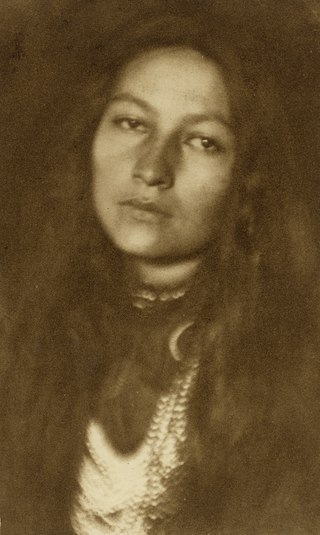
Zitkala-Ša, also Zitkála-Šá, was a Yankton Dakota writer, editor, translator, musician, educator, and political activist. She was also known by her Anglicized and married name, Gertrude Simmons Bonnin. She wrote several works chronicling her struggles with cultural identity, and the pull between the majority culture in which she was educated, and the Dakota culture into which she was born and raised. Her later books were among the first works to bring traditional Native American stories to a widespread white English-speaking readership.

Tribal sovereignty in the United States is the concept of the inherent authority of Indigenous tribes to govern themselves within the borders of the United States.
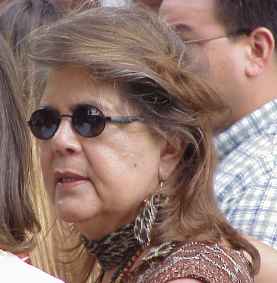
Wilma Pearl Mankiller was a Native American activist, social worker, community developer and the first woman elected to serve as Principal Chief of the Cherokee Nation. Born in Tahlequah, Oklahoma, she lived on her family's allotment in Adair County, Oklahoma, until the age of 11, when her family relocated to San Francisco as part of a federal government program to urbanize Indigenous Americans. After high school, she married a well-to-do Ecuadorian and raised two daughters. Inspired by the social and political movements of the 1960s, Mankiller became involved in the Occupation of Alcatraz and later participated in the land and compensation struggles with the Pit River Tribe. For five years in the early 1970s, she was employed as a social worker, focusing mainly on children's issues.
Non-voting members of the United States House of Representatives are representatives of their territory in the House of Representatives, who do not have a right to vote on legislation in the full House but nevertheless have floor privileges and are able to participate in certain other House functions. Non-voting members may vote in a House committee of which they are a member and introduce legislation.

The United Keetoowah Band of Cherokee Indians in Oklahoma is a federally recognized tribe of Cherokee Native Americans headquartered in Tahlequah, Oklahoma. According to the UKB website, its members are mostly descendants of "Old Settlers" or "Western Cherokees," those Cherokees who migrated from the Southeast to present-day Arkansas and Oklahoma around 1817. Some reports estimate that Old Settlers began migrating west by 1800, before the forced relocation of Cherokees by the United States in the late 1830s under the Indian Removal Act.
Jesse Bartley Milam (1884–1949) was best known as the first Principal Chief of the Cherokee Nation appointed by a U.S. president since tribal government had been dissolved before Oklahoma Statehood in 1907. He was appointed by President Franklin D. Roosevelt in 1941, who reappointed him in 1942 and 1943; he was reappointed by President Harry S. Truman in 1948. He died while in office in 1949.
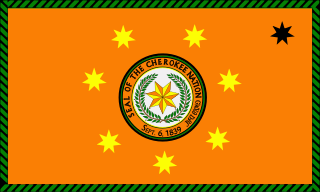
The Cherokee Nation, formerly known as the Cherokee Nation of Oklahoma, is the largest of three federally recognized tribes of Cherokees in the United States. It includes people descended from members of the Old Cherokee Nation who relocated, due to increasing pressure, from the Southeast to Indian Territory and Cherokees who were forced to relocate on the Trail of Tears. The tribe also includes descendants of Cherokee Freedmen and Natchez Nation. As of 2024, over 466,000 people were enrolled in the Cherokee Nation.

The National Congress of American Indians (NCAI) is an American Indian and Alaska Native rights organization. It was founded in 1944 to represent the tribes and resist U.S. federal government pressure for termination of tribal rights and assimilation of their people. These were in contradiction of their treaty rights and status as sovereign entities. The organization continues to be an association of federally recognized and state-recognized Indian tribes.

Kimberly Teehee is a Cherokee attorney, politician, and activist on Native American issues. She is a Delegate-designate to the U.S. House of Representatives from the Cherokee Nation. She served as senior policy advisor for Native American affairs in the administration of President Barack Obama from 2009 to 2012. In February 2020, she was named by Time as one of 16 activists fighting for a "More Equal America."
The following outline is provided as an overview of and topical guide to United States federal Indian law and policy:

The National Council of American Indians(NCAI) was established in February 1926. This organization's purpose was to advocate for Native American rights and representation before the United States government.
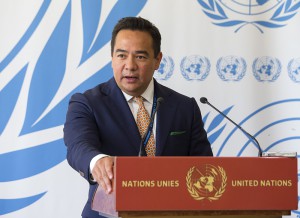
Keith Michael Harper is an American attorney and diplomat who was the first Native American to ever receive the rank of a U.S. ambassador to the United Nations Human Rights Council. He is a member of the Cherokee Nation of Oklahoma and as a lawyer he is known for working on behalf of Native Americans. He was, from June 2014 to January 2017, the U.S. representative to the United Nations Human Rights Council in Geneva.
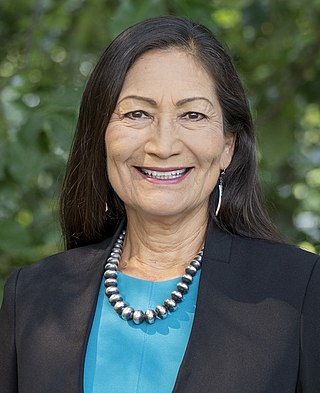
Debra Anne Haaland is an American politician serving as the 54th United States Secretary of the Interior. A member of the Democratic Party, she previously served as the U.S. representative for New Mexico's 1st congressional district from 2019 to 2021 and as chair of the New Mexico Democratic Party from 2015 to 2017. Haaland, a Native American, is an enrolled member of the Laguna Pueblo tribe.

Sharice Lynnette Davids is an American attorney, former mixed martial artist, and politician serving as the U.S. representative from Kansas's 3rd congressional district since 2019. A member of the Democratic Party, she represents a district that includes most of the Kansas side of the Kansas City metropolitan area, including Kansas City, Overland Park, Prairie Village, Leawood, Lenexa, and Olathe.
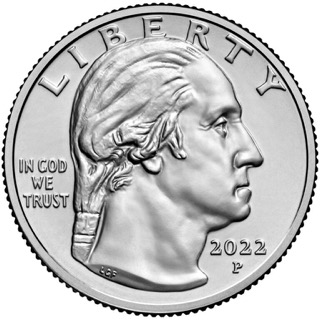
The American Women quarters program is a series of quarters featuring notable women in U.S. history, commemorating the centennial of the Nineteenth Amendment to the United States Constitution. The United States Mint is issuing five designs each year from 2022 to 2025 for 20 total designs. One woman will be honored on the reverse of each coin, selected for "contributions to the United States in a wide spectrum of accomplishments and fields, including but not limited to suffrage, civil rights, abolition, government, humanities, science, space, and arts." The obverse depicts George Washington with a new design. Most of the women featured have been from ethnic minority groups.
The Cherokee delegate to the United States House of Representatives is an office established via the Treaty of New Echota in 1835. The office was intended to represent the Cherokee people and was instrumental in negotiations of land transfer and sovereignty in the Treaty. The office went vacant until 2019, with the appointment of Kimberly Teehee of the Cherokee Nation. Teehee and tribal leadership attempted to get her seated in the 116th and 117th United States Congresses. In 2021, the United Keetoowah Band of Cherokee Indians designated their own delegate, lawyer Victoria Holland.

















